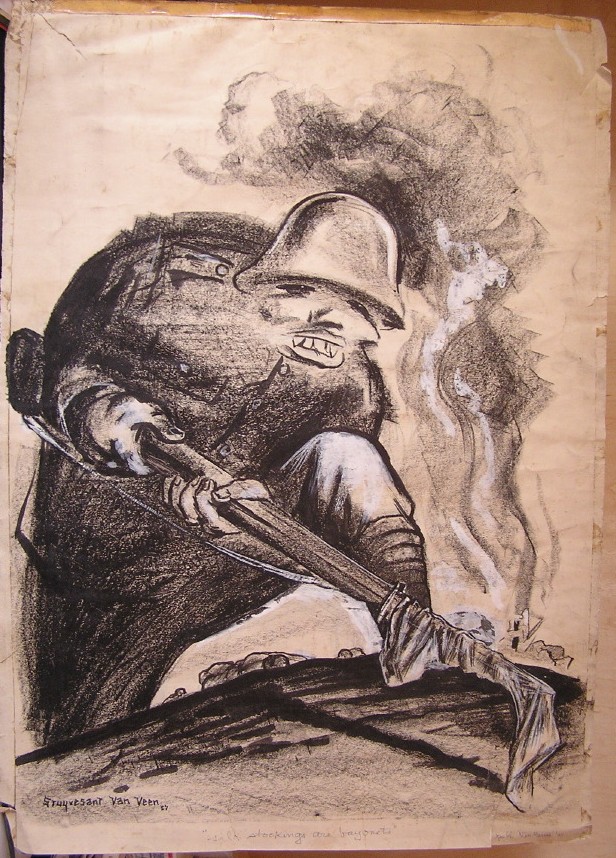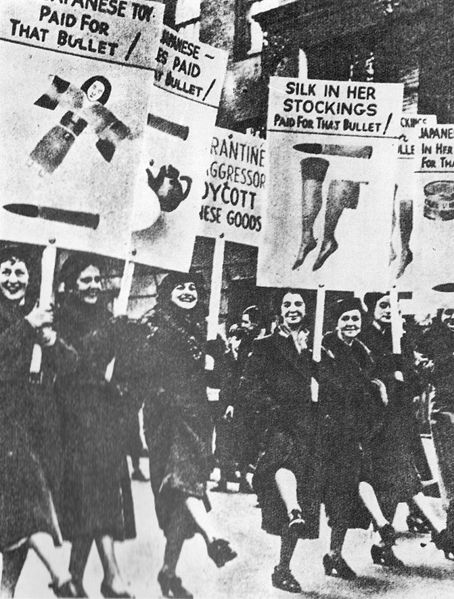First of all, what a great name. He could be a character in a novel by Thomas Pynchon or T. Coraghessan Boyle. But instead Stuyvesant Van Veen (1910-1988) is the name of a vital American artist of social conscience, and one who deserves greater attention. A painter, muralist, satirist, and illustrator, he employed his well-honed graphic talents most powerfully during the 1930s.
Searching Google uncovers only bits and pieces of his legacy: a cursory NY Times obit found here; his 1932 depiction of the folly of war here; a 1937 photo of Van Veen working on a U.S. Courthouse mural in Pittsburgh here; a profile of his work during World War II (Van Veen served as Sgt. in the Army) creating a mural at what is now Wright-Patterson Air Force Base, here (second photo of 24).
Recently I won an eBay auction of a drawing Van Veen created in 1937 for publication in the radical monthly, The New Masses. (I was the only bidder.) The image of looming military threat — literally from over the horizon — was common in political cartoons of that era:
.

.
Now comes the fun part — researching the history and meaning of the piece. I’ve got to find a set of New Masses from 1937 to see if in fact the drawing was reproduced there. Was it used to illustrate an article? On what subject? What’s the meaning of the title, “Silk Stockings are Bayonets”? Does the image depict a specific episode of fascist aggression — somewhere in Europe or Asia? Why did Van Veen make the drawing so large (it’s 29 x 20 inches)? Was that the standard size New Masses required its illustrators to submit for purposes of reproduction? Or did Van Veen intend the drawing for public display separate and apart from its magazine appearance?
I will update this post when answers are found.
UPDATE (09-26-2010). Adam McIntosh posted a comment explaining the title and historical context: “The title “Silk Stockings are Bayonets” is a reference to the fact that the silk used in the making of stockings in the 1930s was imported from Japan. Thus implying the buying of silk stockings was funding the Japanese war of aggression in China. Besides the title, if you look at the soldier, despite the dehumanizing vagueness of the depiction, his gear, especially the helmet, is unmistakably that of the Imperial Japanese Army.” My thanks go to Mr. McIntosh. With his information about the Second Sino-Japanese War that broke out in 1937, and with a little help from Google, I found a photograph in which”New York ladies parade with non-silk stockings to support the boycott on Japanese goods”:
.
.
